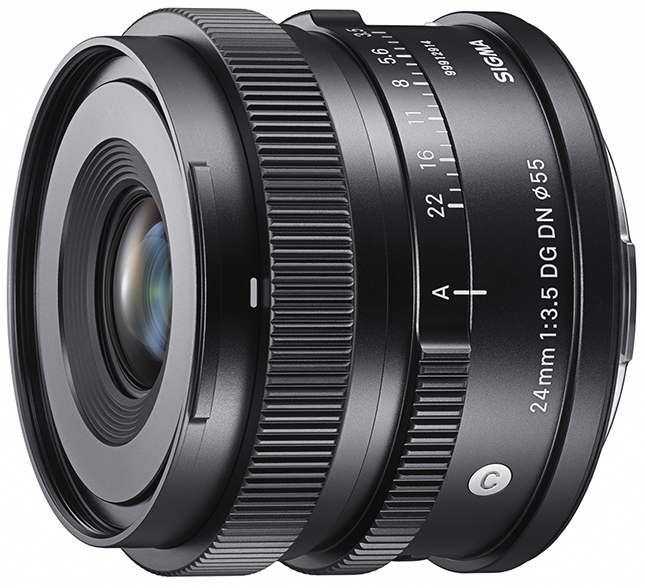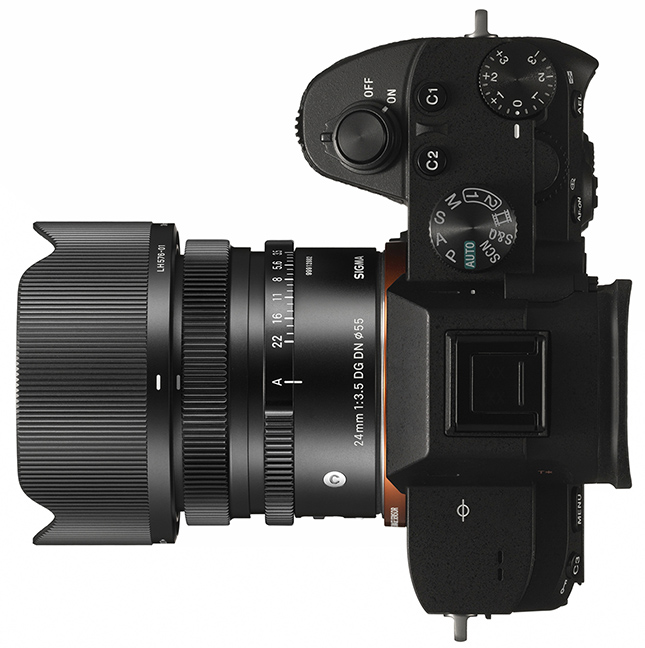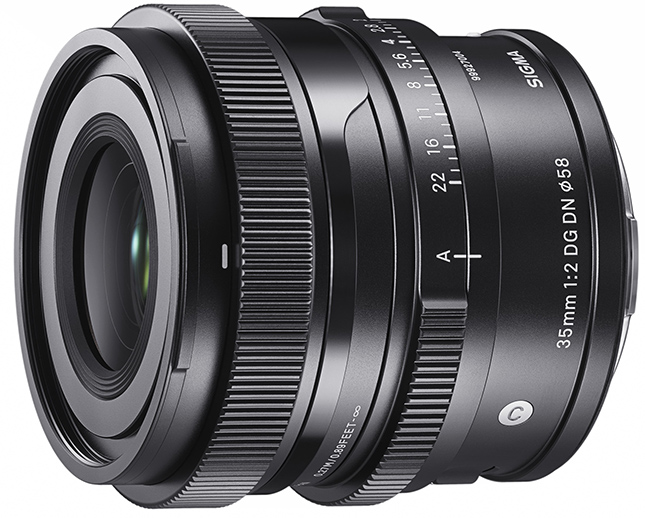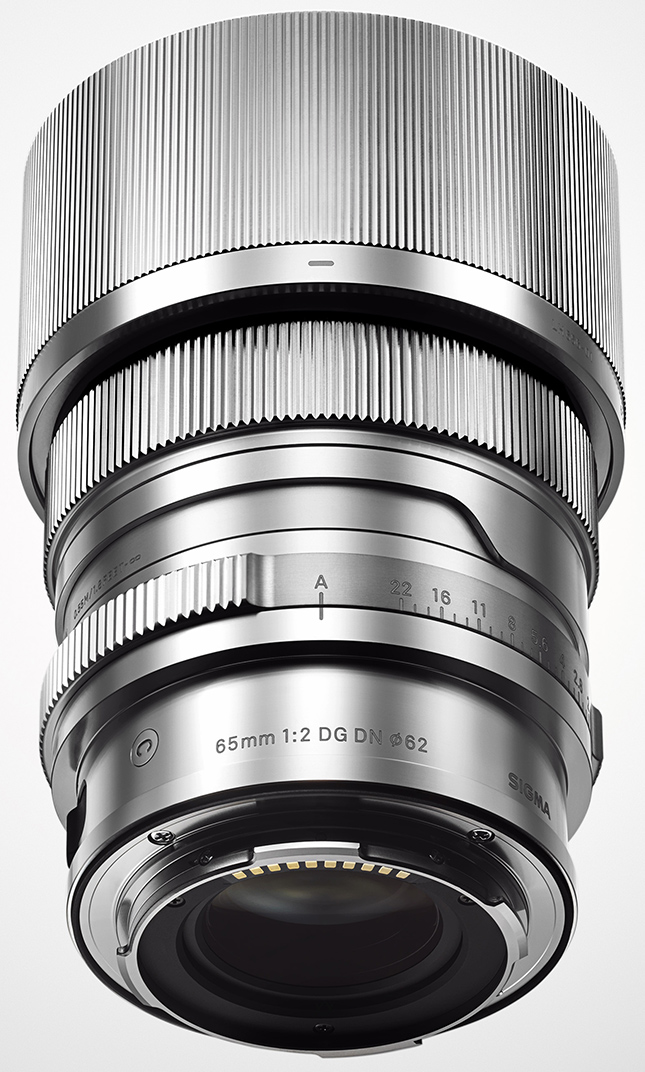Sigma announces a trio of “I Series” premium primes for full-frame mirrorless cameras
posted Tuesday, December 1, 2020 at 8:30 AM EDT
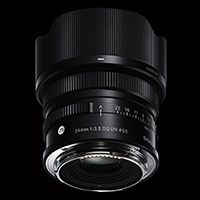
If you're in the market for not only compact but also stylish and high-quality primes for your Sony or L-mount mirrorless camera, the all-new Sigma I Series of premium prime lenses could be just the ticket. Part of Sigma's Comptempory line of lenses, the new "I Series" of primes are a premium sub-set of lenses offering a combination of stylish design, including manual aperture rings and all-metal construction, along with a lightweight and compact form factor.
The I Series launches with a trio of focal lengths, a wide-angle 24mm f/3.5, a classic 35mm f/2 and a mid-telephoto 65mm f/2. Though not mentioned as being part of the "I Series" initially, the previously-announced 45mm F2.8 DG DN Contemporary lens that debuted alongside the Sigma fp is also classified now as part of the new I Series of lenses and shares a similar overall design and construction.
Shared among the four I Series lenses are a set of common features and characteristics, including an all-metal, precision-cut aluminum construction with metal internal parts and metal lens hoods, as well as manual aperture rings and knurled rings and surfaces for excellent handling and "an enjoyable tactile experience." All three lenses, as well as the previous 45mm f/2.8 lens, feature dust- and splash-proof lens mounts (though any additional weather-sealing has not been specified), and the lenses' mechanical design are said to follow the same stringent levels as Sigma's CINE lens series.
Additional shared features include a dedicated focus mode switch, stepping motor-powered autofocus for smooth and quiet AF performance, compatibility with the Sigma USB Dock UD-11 (for L-mount versions only), support for DMF and AF+MF modes with Sony E-mount versions, incorporating Sigma's Super Multi-Layer Coating to help reduce flare and ghosting and to improve contrast, and durable brass bayonet lens mounts.
SIGMA 24mm F3.5 DG DN Contemporary
The new 24mm f/3.5 DG DN prime shares a strikingly similar design to the earlier 45mm f/2.8 lens, with a length at just under 2 inches (48.8mm) and a diameter of just 2.5 inches 64mm) as well as a weight of just 7.9 oz (225g; L-mount version). This incredibly small lens is nevertheless a full-frame-format wide-angle prime that's vastly more compact and lighter than a typical DSLR-format 24mm lens. With a wide 24mm perspective, the 24mm f/3.5 lens is an excellent option for landscape photography, and yet with a close-focus distance of just 10cm and a maximum reproduction ratio of 1:2, it's also a fantastic option for close-up shooting, as well.
Comprised of 10 elements in 8 groups, including 1 SLD glass lens and 3 aspherical elements (high-precision, glass-molded aspherical elements), the Sigma 24mm f/3.5 DG DN is said to offer edge-to-edge sharpness even when shooting wide open. The 7-bladed rounded diaphragm helps ensure smooth bokeh performance in the out-of-focus areas.
The 24mm f/3.5 includes a metal petal-shaped lens hood and shares the same 55mm filter thread size as the 45mm f/2.8 lens.
SIGMA 35mm F2 DG DN Contemporary
A 35mm lens is a classic and versatile focal length, one that's a great choice for wide landscapes, day-to-day general photography, street shooting and even portraiture to a certain degree. It's an excellent length have in your bag, and the new Sigma 35mm f/2 DG DN prime is an impressively portable, light option for full-frame shooters. Similar to the 24mm f/3.5 lens, the Sigma 35mm f/2 DG DN uses 10 total lens elements, in 9 groups rather than 8, and also utilizes 1 SLD element to help combat axial chromatic aberration and 3 aspherical lenses to help suppress spherical aberrations and field curvature. Further, Sigma also states that the lens' optical design also helps suppress sagittal coma aberration, which makes it a good option for night sky photography.
The bright f/2 aperture allows for excellent low-light performance and subject isolation, while the lens' 9-bladed rounded aperture diaphragm helps create smooth background blurring. The 35mm f/2 DG DN features a rounded metal lens hood and uses a 58mm filter thread. In terms of physical dimensions, the lens weighs only 11.5 oz. (325g), has a length of 2.6 in. (65.4mm) and a diameter of 2.8 in. (70mm). Close-focusing performance isn't as close as the 24mm lens, with the 35mm focusing down to 1.6 in (27mm), creating a maximum magnification ratio of 1:5.7.
SIGMA 65mm F2 DG DN Contemporary
For those wanting a bit more reach or a more portrait-focused focal length, the Sigma 65mm f/2 DG DN prime offers a longer, more compressed perspective than a typical 50mm prime, which should make for flattering portraiture performance while the bright, wide f/2 aperture lets your subject stand out from the background. Again, sharing an ultra-compact form factor, the Sigma 65mm f/2 lens weighs only 14.2 oz (405g) with a length just shy of 3 inches (74.7mm) and a diameter of 2.8 inches (72mm). The 65mm prime uses a bit more glass than its shorter siblings, utilizing 12 total elements situated into 9 groups and includes a single SLD element and two aspherical elements. The SLD glass helps suppress axial CA, while the pair of aspherical elements correct for spherical and comatic aberrations as well as astigmatism.
According to Sigma, the control of spherical aberration in the lens not only helps with pleasing bokeh performance but it also helps reduce vignetting and suppress "lemon-shaped" and "swirly" bokeh effects. Like the other lenses, the 65mm f/2 prime includes Super Multi-Layer Coating, which helps prevent ghosting and flare -- which can be particularly problematic when shooting in backlit scenes.
The minimum focus distance of the Sigma 65mm f/2 lens is the longest of these three new primes, focusing down to 21.7 inches (55mm), thus offering a maximum magnification ratio of 1/6.8. The lens' filter size is also the largest of the trio, at 62mm.
Pricing & Availability
The three new Sigma I Series primes are set to go on sale in mid-January 2021, with retail prices as follows:
- 24mm F3.5 DG DN Contemporary - MSRP $549
- 35mm F2 DG DN Contemporary - MSRP $639
- 65mm F2 DG DN Contemporary - MSRP $699
